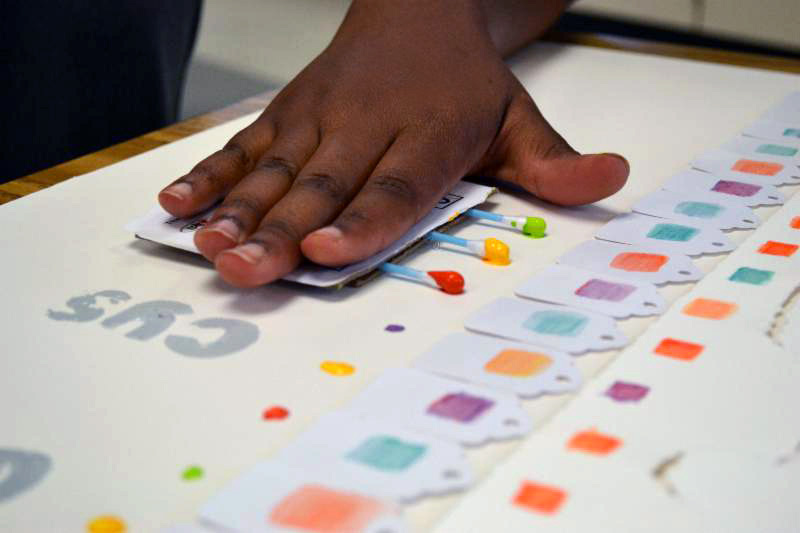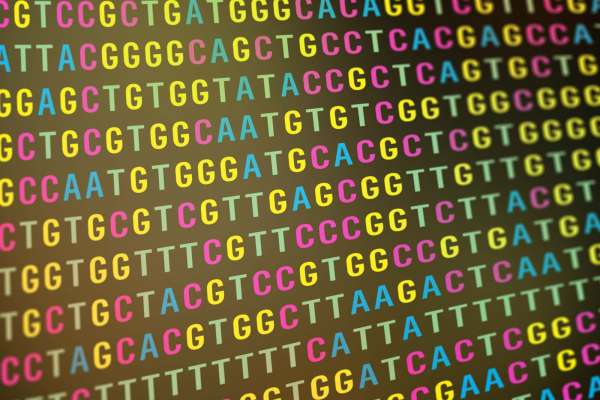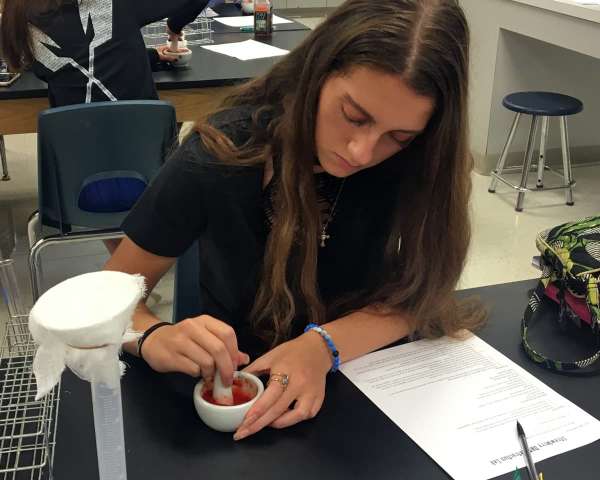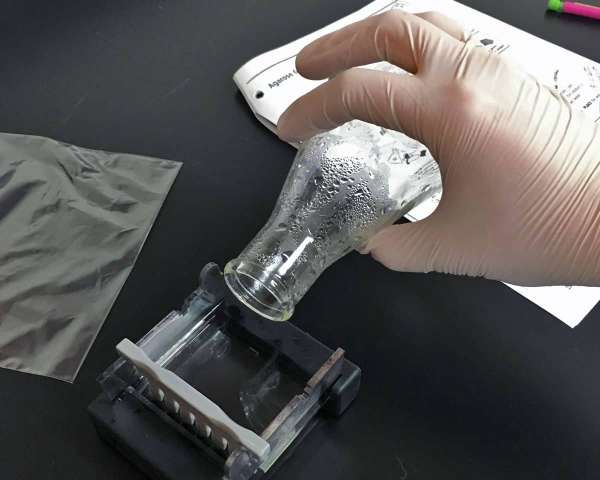Central dogma: an integration of science and art
Lessons
# Creating the DNA sequence
Students review DNA basics, complete a color palette for nitrogen bases and create DNA sequences.
Files
# Transcription
Students create the second panel of a 3-panel art project that illustrates the process of how DNA is transcribed into RNA code.
Files
Teacher background
Genetics and the study of heredity relies on an understanding of how DNA works to control traits. Students study meiosis to determine the probability of offspring variation, but the actual expression of the trait relies on the sequence of DNA. DNA resides in the nucleus of most cells and has to get the message it holds in its nitrogen base sequence to the cell organelles in order for the cell to synthesize proteins. This occurs through the process of transcription (DNA sequence communicated to mRNA) and translation (the mRNA sequence given to tRNA to gather the amino acids in the right order). Students have practiced this sequence of steps in many ways. This activity helps them to see the relationships between mRNA and tRNA triplets in a different way: not just as shapes of molecules fitting together, but by using art, creating complementary colors for each nitrogen base.
Too often efforts to integrate art and science fall short in helping students master abstract concepts at a deep level. This unit is not about simple diagrams, drawings or illustration. Instead, it demonstrates a substantive arts-integrated approach to teaching challenging science content. While improving science content knowledge is the main goal, the arts-integrated approach gives students opportunities to cultivate technical as well as higher order thinking skills in both disciplines.
Next gen science standards
Crosscutting concepts
- Patterns
- Cause and effect
- Systems and system models
- Structure and function
Disciplinary core ideas/content
- LS1A Structure and Function
- LS3A Inheritance of traits
- LS3B Variations of traits





Share this